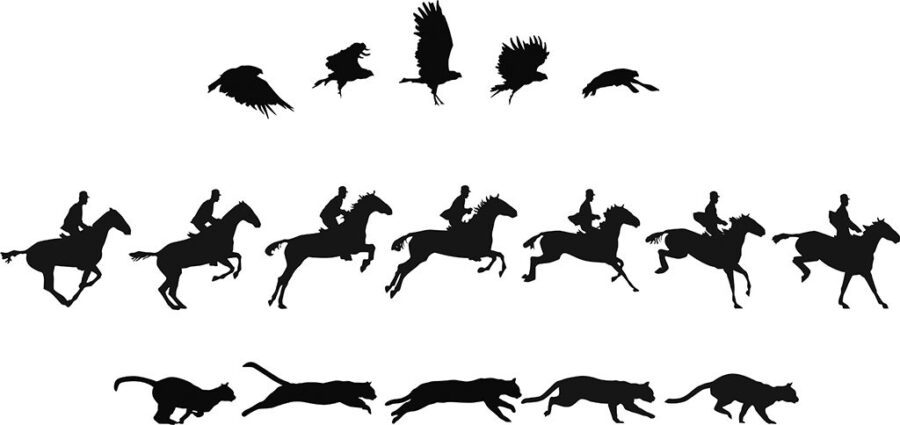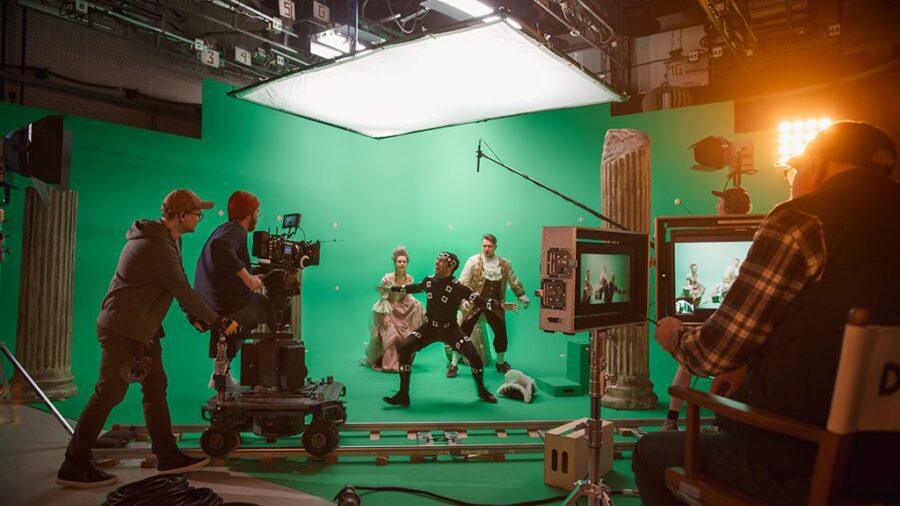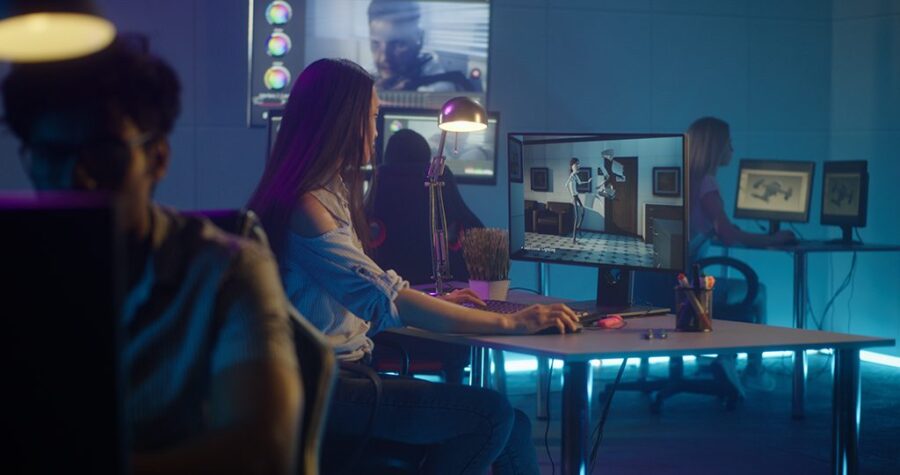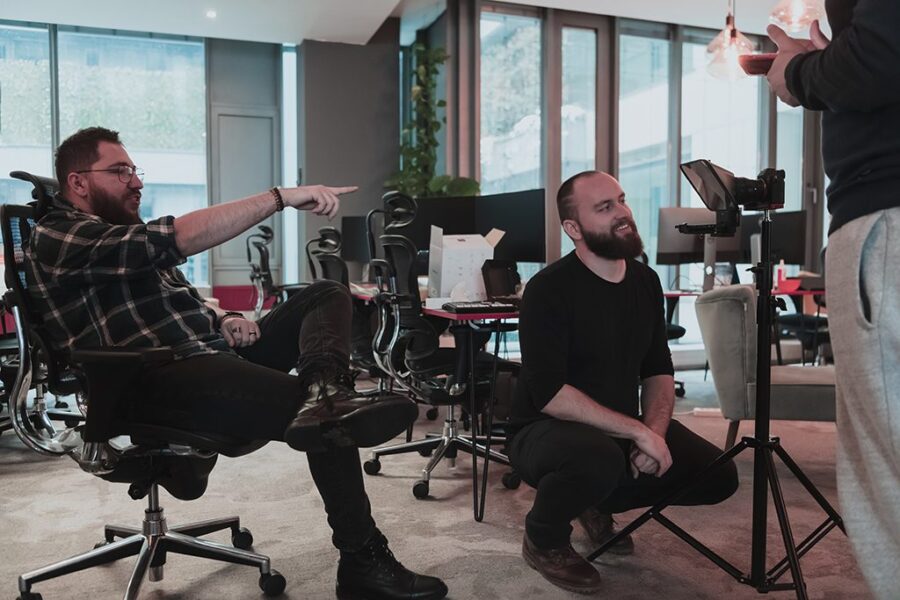
A few years ago, I wrote an article entitled The Rise of the Studio Model for Forbes, which became my second most popular article in my career, with over half a million hits. This led me to contribute to the book Agile 2: The Next Iteration of Agile from Wiley Press. With the pandemic reaching the endemic stage, businesses are emerging from their bunkers to a radically changed environment. One of those changes has been how business and labor relate to one another. Given that, I felt it was a good time to take another stab at The Studio Model, as I see it increasingly becoming the paradigm that works best in this brave new world.

The Factory, the Panopticon, and the Studio
Before digging more deeply into this model, I want to do a short job back into the first twenty-five years of the last century in America (though similar changes were taking place throughout much of Western Europe at the time). Factories had been around for millennia, with the term itself being derived from the Latin – factor, meaning a maker or creator, through factorium, which was a mill or oil press. It eventually became synonymous with any business designed to create goods.
By the mid-19th century, factories had become the dominant form of the workplace for the booming Industrial Age in England. However, the more agrarian America didn’t see factories dominate until the beginning of the twentieth century. Productivity was key during this era. It would take the work of one Frederick Taylor, a mining engineer turned early business consultant, to redefine work solely in terms of productivity. Taylor’s sympathies were general closest to those who paid him – the factory owners – and as such, Taylor began a crusade to eke out the last bit of proficiency from the workers as possible, turning hard, dirty, demanding work into even more hellish work for the many workers who got caught up in Taylor’s quest for productivity.
During this time, the Panopticon became the ideal model (from an owner’s standpoint). The original panopticon was a prison design in which you had cells on multiple floors in a circle, with a central tower at the center of the tower made it possible for guards to see all the prisoners at once. There was no privacy. While it was proposed, such a panopticon was never actually constructed. Still, it was reflected in the overseer in a factory who had an office above the factory floor and could see all the workers working (or not). Corner offices in offices were just as coveted because from there, you both had an unobstructed view of the cubicles and usually a larger office.
By the 1930s, Taylor’s books on productivity had shaped the modern corporation. It would then undergo a second revision in the first and second World Wars as the US and its allies had to standardize everything from training to materials to deployment. As WWII ended and soldiers returned from the Front, they went to work for the factories and corporate officers that bore a great deal of similarity to the military command and control structures that had borrowed heavily from Taylor. This was, in essence, the origin of the modern corporation.
However, it was not the only business model out there. In the late 19th century, Edward Muybridge created an array of cameras capable of capturing animals (and later people) in motion. This kicked off an arms race in which William Dickson and Thomas Edison invented the Kinetograph, a very early camera and projector prototype. William Frieze-Greene and Alexander Parkes invented the celluloid film camera for what would become Eastman-Kodak and Charles Moisson invented a film-camera for the Lumiere brothers in France. By the 1910s, the first silent movies were making their way to very early film theaters that the Lumieres called cinemas, or moving pictures.
From the outset, these new companies broke the mold of how a company should work. In a factory, one person would typically work on a particular part or assemble parts in a certain way before passing them on to another person to handle a different assembly, with the result being a finished product. There was very little variation, other than acting to filter out bad assemblies. The corporate model was not that different, primarily because resources in the 1930s especially were fairly expensive and not remotely portable. Everyone had an assigned task, and the tasks tended to feed one into the next without much variation.

Exploring the Studio Model
On the other hand, studios produced a different kind of product – entertainment. Superficially, the studio model looks more agile than either the factory floor or the corporate floor, with a certain degree of experimentation and iteration, especially early on in the process. Yet there are critical differences as well.
Agile works through iteration: a design is tried and refined, at which point other designs are integrated and go through the same process. In a studio, however, there were hard limits on how many iterations could be performed. A director would work through a scene with a set of actors through multiple takes. Some of these takes were due to syntactic errors – people forgetting their lines or their cues, equipment failures, unexpected noises or people walking in range of the camera, and so forth. These were both costly and inevitable.
However, other takes were done because the director wanted to try different interpretations, change lighting, control where the cameras were pointing, and so forth. They represented options for the director and the various editors that could be selected to tell the story best.
A similar process went into the production of the story itself. In a movie or animated feature, the story may have derived from a book or novella but was typically rewritten in a form that clearly articulated not only dialog but the critical background and pacing information, background musical cues, lighting and camera information, and so forth. The showrunner (usually the director in longer form US productions or the producer or show running in shorter form US and almost all UK and other productions) was also instrumental in determining what the story was supposed to be. If not, the writer of the screenplay was most likely in close communication with the writer(s).
This is a significant departure from Agile – which tends to deprecate design early in the process by a single creative in favor of team evolution of the idea. In the Studio Model, creative discretion flowed from the producer to department heads and from there to section heads and down to the individual artists. The department heads were not interchangeable – the role of the music director was very different from that of the cinematography editor or the effects manager. While the actors were a critical part of the production process, they generally worked to best attempt to capture the vision that the production director had. Note that this didn’t mean that the actor (or a camera person) couldn’t make suggestions to the director, but ultimately, the director was responsible for the story.
Studio productions consequently tended to be much more tightly scripted. This didn’t mean that a film or show couldn’t tear up the script and start from a less refined state periodically. Still, a second difference between the corporate (and agile) method is that various teams were only available at certain points in the schedule for a given project. The costs escalated after those points were reached, so change management heavily influenced planning sessions.
The Studio Method is hardly new (and has its limitations), but it, too, has evolved with technology. When you get down to it, it is a risk mitigation strategy. Media productions today can generate revenues well over USD 1 billion globally, but even so, production costs to achieve such revenue figures can exceed several hundred million dollars. A single dismal film or serial can generally be absorbed by a larger studio, but three or four such in a row can spell doom. As such, studios cannot afford repeated iteration cycles. Instead, studio managers perform a balancing act by planning, implementing, and evaluating in a modular fashion: story arcs are designed to be expressed as possibilities, which means that when something gets left on the editing room’s floor, the overall flow remains cohesive.
Another distinction that exists between Studio productions and (some) software – reusability is more pervasive in the latter case. In an 3D animated film, you might expect to see some reusability in character animation, but it’s less common than you might expect because every character has its own rigging (how it moves), and the technology changes so rapidly even from one major production arc to the next that older characters just do not “scale well” to newer productions and consequently need to be redesigned. Similarly, look and feel (lighting, physics, particle fields and so forth) follows the same evolutionary patterns.
What has emerged with both games and media productions are DLCs – downloadable content that lets players of games (and increasingly viewers of movies), get access to new storylines, new characters, new environments, new “skins”, that extend the universe of that particular game. The story does not end when the credits roll, and continuity becomes both a major aspect of such development as a balance has to be made between an initial creator’s story and those who prefer to play in that creator’s playground.

The Studio Model, Software, and Data
Overall, the Studio Model dominates consumer-oriented software compared to corporate or productivity software. It’s worth noting that architects (the closest analog to a director) did not enter the lexicon of the Agile Manifesto, which was instead focused on self-organizing teams and re-entrant iteration. Indeed, Agile would end up reconstructing the director role via the scrum master, who significantly was the person responsible for the stories that the various teams worked on.
This also differs from the corporate model, where power hierarchies have traditionally been based upon sales domains – a company’s global president had more authority than a regional vice president of EMEA. Still, in general, these positions had very little creative involvement (or latitude). This also led to the breakdown in companies by IT and so forth, and that department’s corresponding outsourcing to cloud-based services).
However, this may change for two reasons. The first has to do with an increasing focus on data, which in many respects represents a story being told. This is augmented by a broad shift of more and more manufacturing companies to become publishing companies, where the things being published are primarily virtual until they are final instantiated via 3D printing or similar technology. This plays out in at least one consensus of the multiverse.
Consider, for instance, an automotive manufacturer. That manufacturer creates multiple virtual representations – digital twins – of both their actual product line and their concept cars, which are often designed primarily to establish a particular look (to tell a story) that informs how the cars actually built will differ from previous years. Where things get interesting is that digital twins in this regard can make their way into games and other media, though licensing and similar deals, with varying degrees of functionality. This also raises the possibility that individuals can license the designs, then build their own from these twins, using additive or ablative printing, or build experiences around the game dynamics of such virtual constructs when transported into other virtual worlds.
In effect, if you are a media producer of any sort, and soon, just about anything can be considered media of some sort, you will probably be part of a studio model chain.

The Micro-Studio
Virtualization has other impacts upon the Studio Model. In 2022, most game engines now have at least one open platform among their offerings, with commercial versions providing early access to emerging technology. Video and audio technology are similarly becoming inexpensive and pervasive. This means that the ability of an individual to tell a story with a studio has now become quite feasible.
Building any world usually still requires a few critical skills, including literary proficiency, design, 3D modeling, animation, and sound management, but it takes far fewer people to do these tasks. This low barrier to entry makes it easier to nucleate micro-studios. This makes it possible to build an initial concept, distribute it in a social media or gaming setting (with the natural assumption that these two are merging), then use word of mouth and reputation to build more ambitious projects.
This also creates a new ownership model based primarily upon subscription and utilization. deriving from the fact that good content – good stories – are comparatively rare. This rarity is significant. Even with AI that is capable of generating artwork, music, and written content, the reality is that the skill to create compelling content is something that humans have trouble doing consistently (it’s difficult to make conceptually). Given this, there is a strong need for novel content, and this has always driven the studio model, from the earliest days of black and white films to the most recent media spectaculars. Those who can create engaging and compelling worlds will do well in this new era and will likely do so increasingly using the Studio Model.
Indeed, what differentiates the Studio Model from Agile is that the former can (and often does) start with a single person, then grows over time as the story grows. In other words, the Studio Model is fractal, branching off like a tree. At the same time, just as stories can eventually reach a point where they oversaturate the available interest space, the base story often may become dormant, only to be rediscovered. Consider how many variations of Arthur Conan Doyle’s Sherlock Holmes stories exist, some being highly faithful retellings (Jeremy Brett’s depictions in the early 2000s, others being intriguing variations (from Guy Ritchie’s Sherlock Holmes to Benedict Cumberbatch’s turn as Sherlock in the late 2010s, before he became Strange).

Tenets of the Studio Model
The Studio Model has a few basic tenets, some similar to Agile, some differing by quite a bit.
- You have a primary creator within the organization that determines the ultimate shape of the product in question. This may be a producer, writer, director, show-running, or similar role, but these people essentially are responsible for the world being created.
- Creative control tends to devolve along hierarchical lines – a show-runner may allocate creative control to specialized editors – cinematographers, location managers, costume directors, conductors, animation directors, etc. They have fairly broad latitude within their particular mandate.
- Designers make up the next layer down – these people generally manage individual aspects of the production, again within the constraints of the editors.
- Creatives are artists, musicians, actors, wardrobe creators, set specialists, and so forth. Most are specialists, and over time they will ascend the hierarchy (actors become writers or directors, camera operators become cinematographic editors, etc.).
- Hierarchies can be broken down into consulting units. For instance, many smaller studios may make use of dedicated special effects houses which are simply independent SFX departments.
- Marketing, sales, IT and finance tend to be most closely bound to the core studio compared to creative services (though this is fading as marketing becomes more analytic, cloud computing reduces IT infrastructure, and similar factors both reduce finance’s role and reduce “executive meddling.”
- The goal of a given studio is not to develop individual works, but instead to develop franchises. A franchise can be thought of as a consistent world with shared characters and overlapping stories that provide internal consistency. The Marvel or DC Cinematic Universes, Star Wars, Star Trek, Tolkien, Game of Thrones, Syndicate, Halo, Pokemon, and so forth all represent franchises, typically ones that were sparked initially from a single creator.
- Creative control is earned.
- The value proposition of the Studio Model is the creation of a universe. That is to say, each product that the studio creates either expands upon an existing story, filling in the universe that the product’s story exists in, or establishes a new story altogether.
- The by-products of these productions represent shared stories and characters that take on a life of their own. No one has ever met Sherlock Holmes, but everyone knows who he (or in some cases, she) is. This hugely impacts marketing and is fundamental to the notion of a metaverse.
- Planning and serendipity each play a part in the Studio Model. Stories must connect with the audience, and a fine line needs to be traversed between rehashing a story that has become too well-known (how many Batman origin stories do we truly need) and ignoring continuity altogether (Halle Berry’s Catwoman).
- Finally, intellectual property is fundamental to the Studio Model. One problem the software industry suffers from is that individual creativity is not recognized, and indeed is anonymized as much as possible (this is especially a problem with Agile). Programming is a creative endeavor.
None of this is especially new, but what is new is the dawning recognition that the economy is shifting to favor creativity as yet another form of capital. The methodologies that we develop for harnessing that creativity will likely play a big part in what the emerging economy will look like.
I hope to explore these concepts more in detail soon.

